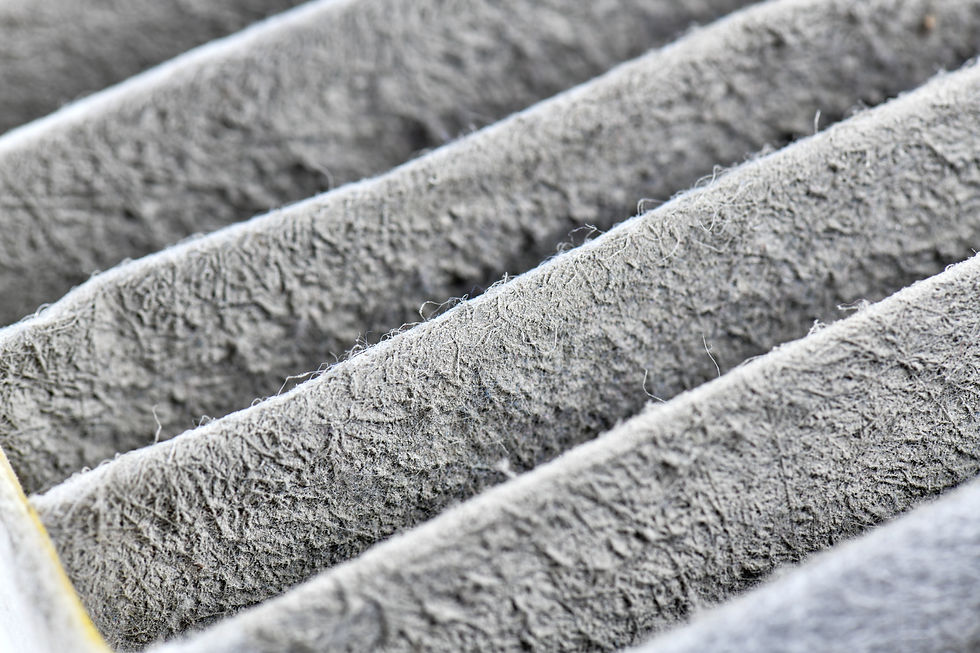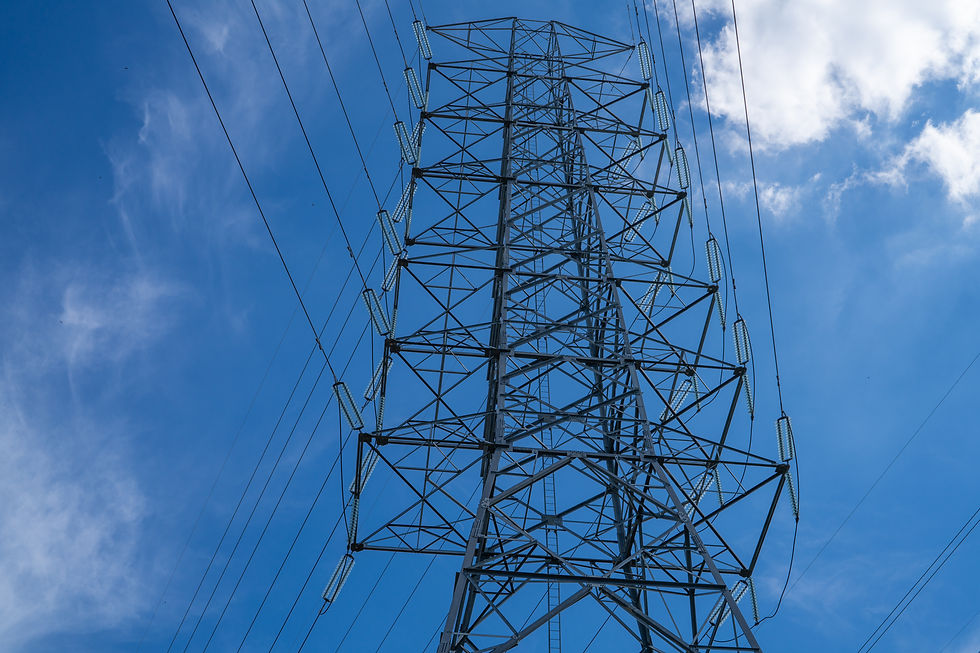How to Make a Commercial Building More Energy Efficient
- Jennifer Crowley
- Dec 22, 2023
- 5 min read
Updated: Jul 8, 2024

Current Commercial Building Energy Efficiency
To start, it’s essential to assess the current energy usage of a commercial building. Conducting an energy audit is a helpful tool for identifying areas of improvement. An energy audit can help determine how much energy the building consumes, where energy is wasted, and what can be done to reduce energy usage.
Another way to assess energy usage is to analyze utility bills. Tracking energy consumption and cost can help identify patterns and provide insight into where energy is used most. Additionally, by monitoring utility bills over time, you can track the effectiveness of energy-saving measures implemented in the building.
Finally, determining the building’s Energy Star rating can help gauge its energy efficiency compared to similar buildings in the same climate zone. Energy Star is a program developed by the U.S. Environmental Protection Agency (EPA) that provides a rating system for buildings based on their energy performance.
By conducting an energy audit, analyzing utility bills, and determining the building’s Energy Star rating, you can identify the most significant areas for improvement and develop a plan to increase energy efficiency.
Lighting
Lighting is one of the most significant contributors to energy consumption in commercial buildings. To reduce energy usage, you can implement the following energy-efficient lighting strategies:
Switch to LED lighting: LED lights are up to 80% more efficient than traditional incandescent lights and can last up to 25 times longer. While the upfront cost of LED lights may be higher, they are a long-term investment that can significantly reduce energy usage and maintenance costs.
Install occupancy sensors: Occupancy sensors can turn off lights when no one is in the room, reducing energy usage and extending the life of the light bulbs. This technology is especially useful in frequently unoccupied areas, such as conference rooms or restrooms.
Utilize natural light: Maximizing natural light can reduce the need for artificial lighting and decrease energy consumption. You can install skylights or windows in areas with little natural light or use daylighting sensors to adjust artificial lighting levels based on the amount of natural light available.
In addition to reducing energy usage, implementing energy-efficient lighting strategies can also improve the lighting quality in the building and create a more comfortable work environment for employees.
By implementing these lighting strategies, you can significantly reduce energy consumption in commercial buildings and improve their overall energy efficiency.
HVAC System
The HVAC (heating, ventilation, and air conditioning) system is another significant contributor to energy consumption in commercial buildings. To increase energy efficiency, you can implement the following HVAC strategies:
Conduct regular maintenance and tune-ups: Regular maintenance and tune-ups can improve the performance and efficiency of the HVAC system. This includes changing air filters, checking refrigerant levels, cleaning coils, and inspecting ductwork.
Replace filters regularly: Clogged air filters can restrict airflow and cause the HVAC system to work harder, consuming more energy. It’s essential to replace filters regularly to maintain the system’s efficiency.
Upgrade to more energy-efficient equipment: Upgrading to more energy-efficient HVAC equipment can significantly reduce energy consumption. Consider replacing standard HVAC filters with Blades’ Pro Filter Series that lower energy consumption by up to 75%, last up to 2x longer and are made of 70% sustainable material.
Get a free consultation for a custom indoor air quality solution.
In addition to these strategies, you can also implement building automation systems that can control the HVAC system based on occupancy, temperature, and humidity levels. These systems can optimize the HVAC system’s performance and reduce energy consumption.
By implementing these HVAC strategies, you can significantly reduce energy consumption in commercial buildings and improve their overall energy efficiency.
Insulation and Weatherization
Insulation and sealing are essential components of a commercial building’s energy efficiency. Proper insulation and sealing can prevent air leaks, reduce energy consumption, and improve indoor air quality. To improve insulation and sealing, you can implement the following strategies:
Seal air leaks: Air leaks can allow conditioned air to escape and outdoor air to enter the building, causing the HVAC system to work harder and consume more energy. Sealing air leaks can prevent this energy loss and improve indoor air quality. Common areas to seal include windows, doors, and ductwork.
Improve insulation: Proper insulation can prevent heat transfer and reduce energy consumption. Areas to insulate include walls, floors, and attics. Choosing the right type of insulation and installing it correctly is essential to ensure maximum efficiency.
Upgrade windows: Single-pane windows can be a significant source of energy loss. Upgrading to double-pane or triple-pane windows can significantly improve energy efficiency and reduce energy consumption. Additionally, installing low-emissivity window coatings can minimize heat transfer and enhance comfort.
By implementing these insulation and sealing strategies, you can significantly reduce energy consumption in commercial buildings and improve their overall energy efficiency.
Renewable Energy
Renewable energy sources can provide clean and sustainable energy to commercial buildings, reducing reliance on traditional energy sources and decreasing energy costs. To incorporate renewable energy sources, you can implement the following strategies:
Install solar panels: Solar panels can convert sunlight into electricity and provide a renewable energy source for the building. By installing solar panels, you can significantly reduce energy consumption and costs.
Utilize wind power: If the building is located in an area with consistent wind, wind turbines can be installed to generate electricity. However, wind turbines can be costly and require significant space.
Incorporate geothermal systems: Geothermal systems utilize the Earth’s natural heat to regulate temperature and provide energy. These systems can be costly to install, but they offer long-term savings and environmental benefits.
By incorporating renewable energy sources, you can significantly reduce energy consumption in commercial buildings and improve their overall energy efficiency. Additionally, utilizing renewable energy sources can decrease reliance on traditional energy sources, promote sustainability, and reduce carbon emissions.
While implementing energy-efficient strategies can significantly reduce energy consumption in a commercial building, employee behaviour can also impact energy usage. To encourage energy-efficient behaviour and promote employee engagement, you can implement the following strategies:
Educate employees on energy-saving practices: Educating employees on energy-saving practices can increase awareness and promote energy-efficient behaviour. This can include training on energy-efficient equipment usage, encouraging employees to turn off equipment when not used, and promoting paperless practices.
Encourage employee participation in energy-saving initiatives: Encouraging employee participation in energy-saving initiatives can promote engagement and foster a culture of sustainability. This can include implementing energy-saving challenges or contests, recognizing and rewarding employees who promote energy-efficient behaviour, and involving employees in energy-saving decision-making processes.
Monitor and track energy usage: Monitoring and tracking energy usage can provide insight into energy consumption patterns and identify areas for improvement. Sharing this information with employees can increase awareness and promote energy-efficient behaviour.
By promoting employee awareness and engagement, you can foster a culture of sustainability and encourage energy-efficient behaviour in commercial buildings. This can lead to long-term energy savings and environmental benefits.
Financing and Incentives
Energy audits and benchmarking can provide valuable insight into a commercial building’s energy consumption patterns and identify areas for improvement. To conduct energy audits and benchmarking, you can implement the following strategies:
Conduct regular energy audits: Regular energy audits can identify areas of energy waste and inefficiency, allowing you to implement targeted energy-saving strategies. Audits can include assessing equipment performance, insulation and sealing, lighting, and HVAC systems.
Benchmark energy usage: Benchmarking energy usage can provide a baseline for energy consumption and identify areas for improvement. Benchmarking can involve comparing energy usage to similar buildings or industry benchmarks.
Implement energy-saving recommendations: Energy-saving recommendations from energy audits and benchmarking can significantly reduce energy consumption and improve energy efficiency. Recommendations can include equipment upgrades, insulation improvements, lighting upgrades, and behaviour change strategies.
By conducting regular energy audits and benchmarking, you can identify opportunities for energy savings and continuously improve the commercial building’s energy efficiency.




















